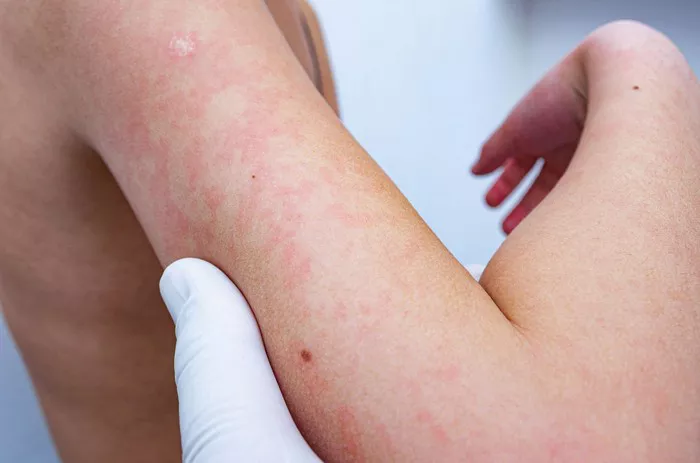Vitiligo is a skin condition characterized by the loss of pigment-producing cells (melanocytes), resulting in white patches on the skin. When vitiligo affects the hands, it can be particularly noticeable and impactful on daily life. This article explores various treatment options specifically for vitiligo on the hands, considering effectiveness, safety, and practicality.
Understanding Vitiligo on Hands
Vitiligo on the hands can manifest as depigmented patches that vary in size and shape. These patches may appear on the fingers, palms, or back of the hands. The condition can be cosmetically concerning and may affect self-esteem, especially since hands are highly visible parts of the body.
Factors to Consider in Treatment Selection
Choosing the best treatment for vitiligo on hands depends on several factors, including:
- Extent of Vitiligo: The size and spread of depigmented patches on the hands.
- Patient Preferences: Individual preferences regarding treatment type, convenience, and expected outcomes.
- Medical History: Any underlying health conditions or previous treatments that may influence treatment options.
Treatment Options for Vitiligo on Hands
Topical Treatments
1. Corticosteroids: Topical corticosteroid creams or ointments are commonly prescribed to reduce inflammation and encourage repigmentation. They are often effective for treating vitiligo on the hands, especially in mild to moderate cases.
2. Calcineurin Inhibitors: Tacrolimus and pimecrolimus are topical immunomodulators that can be used as alternatives to corticosteroids. They work by suppressing the immune response in the skin and may help to repigment affected areas.
3. Topical Vitamin D Analogues: These medications can be used alone or in combination with corticosteroids to promote pigmentation in vitiligo patches.
4. Topical Immunotherapy: Substances like diphencyprone (DPCP) or squaric acid dibutyl ester (SADBE) can be applied topically to stimulate the immune response in the skin and encourage repigmentation.
Phototherapy
1. Narrowband UVB (NB-UVB) Therapy: This involves exposing the hands to UVB light of a specific wavelength. NB-UVB therapy is effective for stimulating melanocyte activity and repigmentation in vitiligo patches on the hands.
2. Excimer Laser Therapy: Excimer lasers deliver targeted UVB light to depigmented areas, promoting melanocyte regeneration and pigmentation. It is particularly useful for treating smaller areas of vitiligo on the hands.
3. Photodynamic Therapy (PDT): PDT combines light activation with a photosensitizing agent to enhance repigmentation in vitiligo patches. It is a newer approach and may be considered for resistant cases.
Oral Medications
1. Systemic Corticosteroids: In severe or widespread cases of vitiligo on the hands, oral corticosteroids may be prescribed to suppress the immune response and reduce inflammation systemically.
2. Immunosuppressants: Medications like azathioprine or methotrexate may be used in combination with other treatments to modulate the immune system and promote repigmentation.
SEE ALSO: Are All White Patches Vitiligo?
Surgical Options
1. Autologous Skin Grafting: This involves taking healthy skin from another part of the body (usually behind the ear or inner thigh) and transplanting it to the depigmented areas on the hands. Skin grafting can be effective for localized vitiligo on the hands.
2. Punch Grafting: Small punch grafts of healthy pigmented skin are placed into depigmented areas on the hands to promote repigmentation.
3. Micropigmentation (Tattooing): Cosmetic tattooing can be used to implant pigment into depigmented areas on the hands, matching the surrounding skin color.
Supportive Therapies
1. Cosmetic Camouflage: Makeup or self-tanning products can be used to conceal vitiligo patches on the hands temporarily.
2. Skin Care: Moisturizing the hands regularly can help to maintain skin health and reduce the visibility of vitiligo patches.
Choosing the Best Treatment Approach
The best treatment for vitiligo on the hands varies depending on the individual’s specific condition and preferences. Factors to consider include:
1. Effectiveness: The treatment’s ability to induce repigmentation and improve the appearance of vitiligo patches on the hands.
2. Safety: Potential side effects and risks associated with each treatment option.
3. Convenience: Factors such as treatment frequency, duration, and practicality in daily life.
4. Cost: Affordability and accessibility of treatment options, including any coverage by health insurance.
Treatment Recommendations
Mild to Moderate Vitiligo on Hands:
Topical Treatments: Corticosteroids, calcineurin inhibitors, and vitamin D analogues are often effective and convenient for daily use.
Localized or Small Patches:
Phototherapy: Narrowband UVB therapy or excimer laser treatment can be highly effective with minimal risk of side effects.
Severe or Widespread Vitiligo on Hands:
Combination Therapies: Consider combining topical treatments with phototherapy or systemic medications for more comprehensive treatment.
Cosmetic Considerations:
Micropigmentation: Tattooing may be a suitable option for those seeking immediate and lasting cosmetic improvement.
Conclusion
Effective management of vitiligo on the hands requires a tailored approach that considers the extent of the condition, patient preferences, and treatment goals. With a variety of treatment options available, including topical therapies, phototherapy, oral medications, surgical techniques, and supportive therapies, individuals with vitiligo on their hands can explore different avenues to achieve repigmentation and improve the appearance of affected areas. Consulting with a dermatologist or healthcare provider is crucial for developing a personalized treatment plan that addresses individual needs and maximizes outcomes in managing vitiligo on the hands.
Related Topics:


























